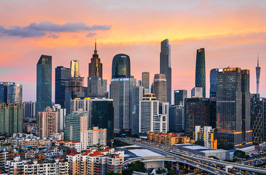Shenzhen gives green light to fully autonomous vehicles

Shenzhen Outer Ring Expressway in Guangdong province. [Photo/Baoan Daily]
Shenzhen, a city that pioneered reform and opening-up in China, will allow fully autonomous vehicles to run on certain roads, as the city in Guangdong province unveiled the nation's first regulation tailored for smart and internet-connected vehicles.
The new regulation, scheduled to come into force on Aug 1, also clarified rules for liability in car accidents that involve autonomous driving, helping to fill the legal gap in China's smart car industry.
Shenzhen is giving self-driving cars a legal "identity card", a key move in accelerating the commercialization of autonomous vehicles, experts said, adding that more legal measures and more testing experience are needed before widening such trials.
The new regulation said automakers don't necessarily have to equip fully autonomous vehicles with human driving modes and equipment, nor must they have human drivers.
But such fully automated vehicles can only run on certain roads and sections designated by Shenzhen's traffic management department, according to the regulation, which was published on the official website of Shenzhen Municipal People's Congress on Tuesday.
Gu Dasong, executive director of the transportation and development research center at Southeast University, said the regulation did not specify what human driving modes and equipment are required. "But traditionally, such equipment could include steering wheels, accelerators and brake pedals used by human drivers."
Removing steering wheels is one of the ultimate goals of autonomous driving, but it differs significantly from traditional car designs and it remains to be seen how will Shenzhen specify local standards, Gu said.
The US National Highway Traffic Safety Administration issued rules in March eliminating the requirement that automated vehicle manufacturers equip fully autonomous vehicles with manual driving controls such as steering wheels, Reuters reported.
Chang Zhenting, secretary-general of the Autonomous Driving Industry Alliance for the Guangdong-Hong Kong-Macao Greater Bay Area, said by including self-driving cars in legislation, Shenzhen is pioneering legal efforts in China to accelerate the commercialization of autonomous vehicles, while ensuring public safety.
Shenzhen is improving its legal framework for the research and development, production, purchasing and sale of autonomous vehicles, Chang said, adding that better vehicle-road coordination and more testing experience are needed before expanding this to other areas.
The new regulation classified autonomous vehicles into three types: conditionally autonomous driving, highly autonomous driving and fully autonomous driving.
The former two types of vehicles must have human control equipment and drivers, the regulation added.
The regulation also clarified rules for liability in car accidents that involve autonomous driving. For autonomous driving vehicles with a driver, the driver is held responsible for accidents and compensation.
For fully autonomous vehicles without a driver, the owner or the user of the vehicle is held responsible for accidents and compensation.
In a traffic accident, if the damage is caused by the defects of a vehicle, the driver, the owner or the user of the vehicle, after paying for the bill, can request compensation from the manufacturer or seller of the car in accordance with laws, the regulation said.
Yu Qian, CEO and founder of QCraft, a Chinese self-driving startup, said, "China's autonomous driving industry is entering a golden development period, with policies becoming increasingly clear and open, and technologies and algorithms becoming more powerful."



 Print
Print Mail
Mail

